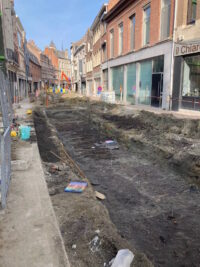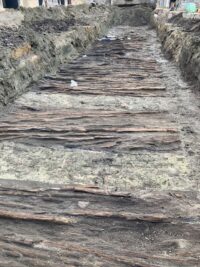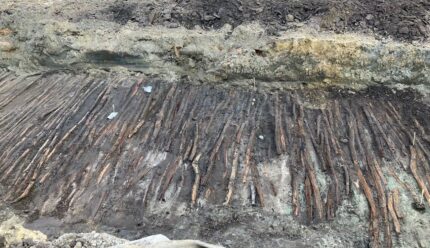
The town of Lier grew around the hermitage of its most famous son, the 8th century saint Gummarus, on the banks of the Nete River. Settlements around the hermitage were destroyed in 9th century Norman raids, but the the relics and chapel of St. Gummarus made it a site of pilgrimage, drawing permanent construction and residents to the area. The earliest historical references to what would become Lier date to 970 A.D. The oldest surviving building is the Romanesque St. Peter’s Chapel, originally built in the 13th century. The medieval city center is located at the confluence of the Grote Nete (Big Nete) and Kleine Nete (Little Nete) where the two rivers come together to form the Nete. It was granted official municipal status in 1212, and by the end of that century it was a regionally important center of the textile trade.

The street was known from 16th century maps, but because in the Middle Ages the roads were made from perishable wood rather than the stone of far more ancient Roman roads, nobody expected to find any surviving remains. In this case, the wood was preserved by a thick layer of clay from alluvial deposits.
Archaeologists will now document the wooden foundations. “The new sewerage system will be installed under the road. These are not valuable objects in themselves and as soon as you start digging them up, they disintegrate,” Mayor Verwaest explained. He is keen to assure us that “everything has been inventorised, measured and photographed”.
* This article was originally published here







No comments:
Post a Comment